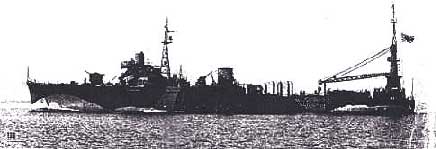|
Michael McFadyen's Scuba Diving - IJN Akitsushima
The Imperial Japanese Navy ship Akitsushima was launched 25 April 1941 at the Kawasaki Shipyard at Kobe, Japan. but the ship was not completed until over a year later on 29 April 1942 (no wonder Japan lost the war, the US and British were finishing similar ships in months). The IJN Akitsushima was a seaplane tender/carrier. The ship displaced 4724 tons, had a waterline length of 113 metres waterline (118 metres overall) and was 15.7 metres wide. The ship was powered by four diesel engines driving twin props, a total of 8000 shp, giving a maximum speed of 19 knots.
 |
| IJN Akitsushima |
The IJN Akitsushima was armed with 10 25 mm anti-aircraft (AA) guns, four five inch (50 cal) guns (two guns each with two barrels) and carried one large Kawanishi flying boat. Five similar ships were planned under the 1939 Program but only one was built.
During the Battle of Guadalcanal in early August 1942, the IJN Akitsushima was in the Solomon Islands. On 7 August 1942, the Americans recaptured Ghavutu Island (opposite the now Capital, Honiara, during one of the bloodiest battles of World War 2 up to that time, with the 1st Parachute Battalion (acting as infantry) landing on the small island from the sea (it is only a couple of hundred metres long and maybe a hundred across) and then being reinforced the next day by even more marines. The Japanese were entrenched on the island in caves and bunkers. The marines suffered when they were shelled and bombed by their own forces. The island was connected to the adjacent island (Tanambogo) by a causeway and the fight for that island was carried out at the same time.
During the attack, the Japanese flying boat tender Akitsushima was seen in the area on its way to Gizo where it was going to establish a sea plane base. There had been a Japanese seaplane base at a Ghavatu.
Just over 18 months later on 17 February 1944, the Akitsushima was anchored off the southern side of Dublon Island in Chuuk (Truk) Lagoon . During the first raids by American aircraft from USS Enterprise (Strike 1AE) she was hit by two 1,000lb bombs dropped by dive bombers. One hit was forward of the bridge and the second at the stern. Further attacks by the Big E's aircraft missed the Akitsushima. However, aircraft from USS Intrepid also attacked the Akitsushima scoring hits on the port beam and starboard quarter. it is reported that the ship's sides were blown out and a fierce fire seen to start.
Later on the same day, a Douglas Dauntless torpedo bomber from USS Enterprise (Strike 1BE) attacked the Akitsushima scoring a hit just aft of amidships. It is reported that an explosion was seen and a fire followed.
 |
| A diagram of IJN Akitsushima |
It is believed that the IJN Akitsushima escaped through the South Pass and lived for another day. The ship travelled via one of the Caroline Islands and then went to Palau for emergency repairs. She only stayed a few days before leaving for the Philippines. This apparently was just before the attacks by the American Task Force 58 on 30 and 31 March 1944 which sank at least 36 ships.
After further repairs, possibly in the Philippines, the Akitsushima ended up in late September 1944 taking refuge with a convoy of at least 12 Japanese ships in the Busuanga Island area of the Northern Palawan group of the Philippines. Eight of the ships were anchored in Coron Bay, the rest to the west and at least one on the northern side of Busuanga Island. The IJN Akitsushima was anchored to the west of Lusong Island with the oiler Okikawa Maru.
Late on the afternoon of 23 September 1944, Fast Carrier Task Force (TF) 38 under the command of Vice Admiral "Bull" Halsey positioned itself for an attack on the ships in the Coron area. At 5.50 am on 24 September 1944, 180 Grumman F6F Hellcat and Grumman SB2C Helldiver planes lifted off the American and headed off on the 350 kilometre flight for the waters of Coron Bay. This was to be the longest carrier based (and return) attack ever carried out. At 9 am the planes reached Coron and located at least 18 large Japanese vessels and started their attack.
The planes attacked the ships in Coron Bay and the ships to the west first. After a frenzied 45 minute attack the planes left, leaving behind numerous sunken ships. It is reported the IJN Akitsushima was attacked by Helldivers, opening fire with all 10 AA guns. However, the supply vessel was no match for the American aircraft and she was hit on the port side hull. Soon the ship was exploding and on fire and soon after sank in the passage between Lajo and Manglet Islands. Most of the ships anchored around Coron were also sunk. Today 14 of these wrecks have been located and most can be dived from Coron. See my Coron Page for more information.
I have not dived this wreck but from all reports it is excellent.
References:
| 
 v6.00.307 © 2003-2005
v6.00.307 © 2003-2005